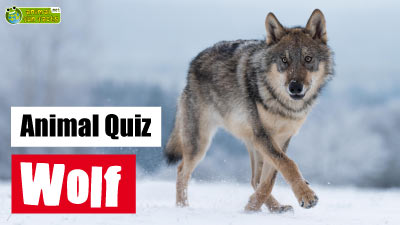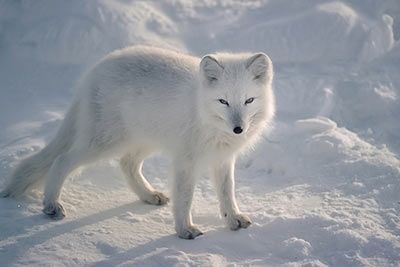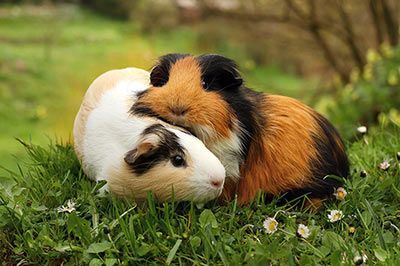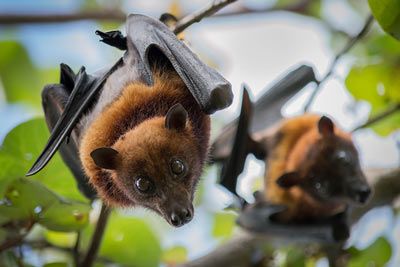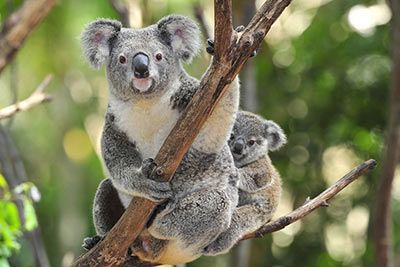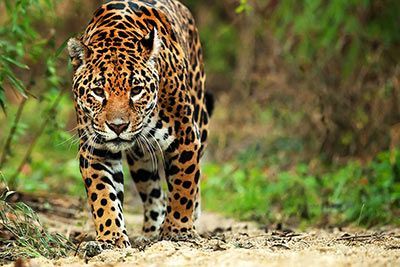Wolf
Gray Wolf Facts
| Size | 31-33 inch (80-85 cm) (shoulder height) |
| Speed | Up to 5 mph (8 km/h) (long distances) |
| Weight | 60-88 lb (28-40 kg) |
| Lifespan | 6-8 years |
| Food | Deer, moose, bisons, moose, hares, mountain sheep |
| Predators | - |
| Habitat | Northern hemisphere |
| Order | Carnivore |
| Family | Dogs |
| Scientific name | Canis lupus |
| Characteristics | All dogs descend from the wolf |
Main Characteristics
The wolf is a predatory animal from which all today's domestic dog breeds descend. Wolves are about as tall and heavy as a German shepherd. There are numerous subspecies, eg. the Arctic wolf, the Tundra wolf and the Timber wolf.
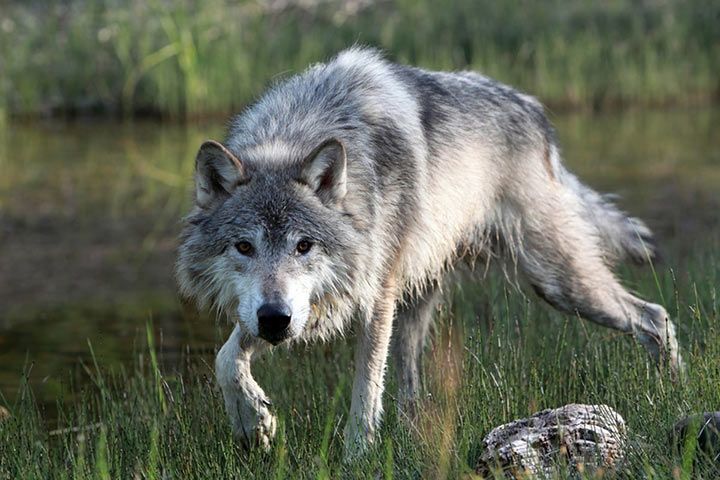
Distribution and Habitat
Wolves mainly live in the northern hemisphere and inhabit forests, but also grass- and bushlands, rocky regions or mountains.
Anatomy and Appearance
Size and Weight
The wolf has a physique similar to that of a German Shepherd. It has long, slim legs, a large head, and a long nose. In Europe wolves have a shoulder height of 31-33 inches (80-85 cm). They weigh between 60 and 88 pounds (28-40 kg).
Coat
Wolves living in Europe are yellow-grey, grey-brown or dark brown. Belly, legs and snout are slightly lighter.
Diet
Wolves eat deer and deer. They also feed on wild boar, rabbits, wild sheep and geese. They also hunt lizards, snakes, frogs and insects. They also eat apples, peaches, figs, melons, blueberries, raspberries, and cherries from time to time.
Life Style
The Pack
Wolves live in families, which are called packs. The pack usually has about eight members, but sometimes there are packs of 20-30 wolves. A wolf family usually consists of two adults (which form the head) and their offspring.
Alpha and Omega
Formerly, people believed that a pack of wolves is always being led by the highest ranking, oldest, and strongest male animal, which was called an "alpha animal". Alpha, because this is the first letter in the Greek alphabet. The omega animal therefore has the lowest rank as it is the last letter of the alphabet. Yet, only wolves in captivity show this behavior. In the wild, wolves do not fight to establish their ranking. Normally, a family of wolves includes two adult animals (the leaders) and their offspring.
Territory
Actually the size of the territory is limited by man and depends mainly on how much space the wolves are allowed to live in. In Europe a wolf territory is about 95 square miles (250 qkm), which equals about 35,000 soccer fields. In Canada and Alaska they can be three times as large.
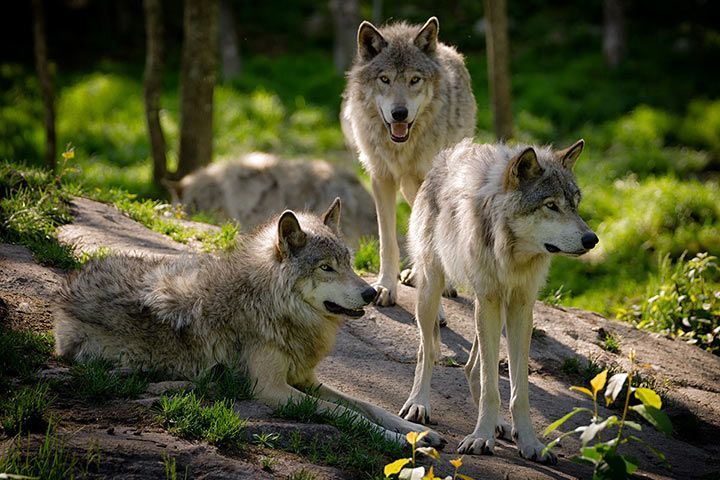
Behavior
Why Do They Howl at the Moon?
The howling of wolves can have many different meanings: "Quick, come here!", "Stop, stranger! This is my territory!" or "Let’s go hunting!" It hasn’t got anything to do with the moon.
Are They Dangerous?
In „Little Red Riding Hood“, the big bad wolf devours grandma, and in “The Wolf and the Seven Young Kids”, little goats end up in its stomach. Even apart from that, the wolf is not very popular, because it feeds on domestic goats, sheep, and cattle. Some even say that the wolf also attacks humans.
Yet, there does not exist one single official report stating that a healthy wolf has ever tried to attack and eat a human being. Normally wolves keep away from humans. But humans are gradually taking over more and more of the wolf’s habitat, so that the wolf does no longer have many options to withdraw.
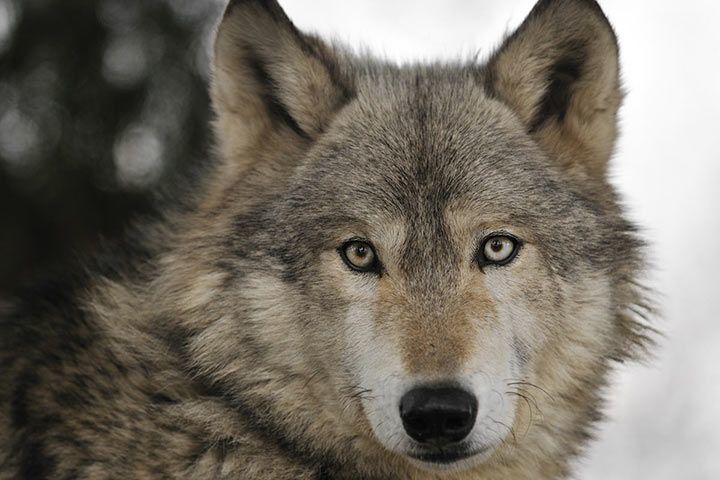
Senses and Abilities
Senses
Wolves have excellent hearing and a very good sense of sight. Their most important and best sense is the sense of smell. If the wind comes from the direction of its prey, a wolf can scent it up to 1.5 miles (2.5 km) away.
Speed
Wolves can run as fast as 38 mph (60 km/h). But only on short distances. Above all, they are enduring long-distance runners and travel 25-37 miles (40-60 km) per day in search of food. They are trotting slowly, with about 5 mph (km/h) on average.
Enemies and Threats
In Germany, an adult wolf has no natural enemies. Bears, eagles and large owls can be dangerous for the cubs.
Importance for the Ecosystem
Wolves are important in maintaining the balance of nature, because they often kill sick or weak animals.
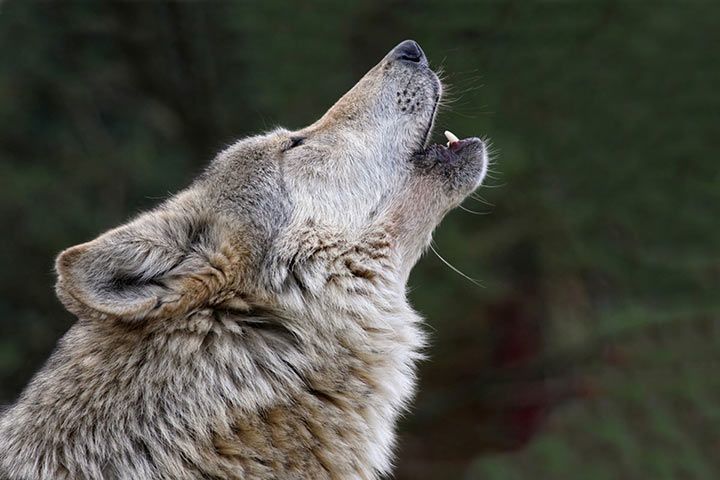
Reproduction
After mating it takes between 62 and 75 days until on to twelve cubs are being born in a den. They are deaf and blind and open their eyes after 11 to 15 days. After 20 days they leave their den for the first time. They are being breast-fed for six to eight weeks. When they are one year old they are fully grown.
Evolution and Origin
Is a Wolf Just a Kind of Wild Dog?
On the contrary: In the course of the centuries, the dog breeds have evolved from the wolf. All domestic dogs from the German shepherd and the poodle to the labrador, the chiahuahua, and the husky have descended from the wolf. Wolves and dogs still have many anatomical and biological characteristics in common, yet they are totally different.
Fun Facts
They Enjoy Playing Games
Wolves like to play games. They sometimes play "soccer" with bones and branches.
The Wolf Is Related To:
- Coyote
- Dog
- Jackal
- Wild Dog
Animals in the Same Biome:
- Arctic Fox
- Artic Hare
- Beaver
- Black Bear
- Brown Bear
- European Hare
- Lemming
- Lynx
- Musk Ox
- Moose
- Polar Bear
- Snowy Owl
- Wolf
Featured Posts:













